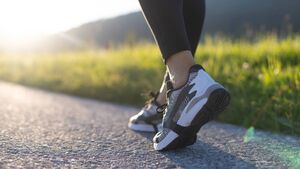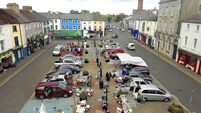Fit Focus: The power of pace for a longer live

Every swift step is an investment in your future self
WE’VE long understood that walking is one of the most accessible and beneficial forms of exercise.
But emerging research suggests that it’s not just the act of walking that matters — it’s the speed at which you do it.
A growing body of evidence indicates that your natural walking pace, particularly a brisk one, is a powerful predictor of your overall health and longevity.
It seems that fast walkers are not just saving time; they might be saving and enhancing their lives.
The connection between walking speed and health is so compelling that some gerontologists have dubbed it the "sixth vital sign," placing it alongside traditional metrics like blood pressure and heart rate.
This isn't about athleticism or structured speed-walking; it's about your typical, comfortable pace when moving from point A to point B.
This habitual pace offers a stunningly simple window into your physiological and neurological well-being.
One of the most cited studies in this field comes from the UK Biobank, which analysed data from nearly 475,000 participants.
The results, published in 2019, were striking. Researchers found that self-reported brisk walkers had a significantly longer life expectancy, regardless of their body mass index (BMI).
To put a number on it, women who reported being fast walkers had a life expectancy of approximately 87 years, compared to 72 years for their slow-walking counterparts. For men, the figures were 86 years versus 65 years.
These figures are dramatic, but they are supported by a wealth of other research. A 2011 study from the University of Pittsburgh found that gait speed was a reliable predictor of life expectancy in older adults.
Similarly, a 2020 analysis concluded that increasing your pace to a brisk walk—generally defined as over 3 miles per hour (mph) or 20 minutes per mile—was associated with a 24 per cent lower risk of all-cause mortality.
So, why is walking speed such a potent indicator? Scientists believe it’s not merely a cause of good health, but a reflection of it. A faster gait is the product of a well-functioning, integrated system.
To maintain a brisk walking pace, several key factors are necessary. First, cardiovascular health is essential; your heart and lungs must be strong enough to efficiently supply oxygenated blood to your muscles during activity. A slow walk can sometimes serve as an early sign of compromised cardiorespiratory fitness.
Second, musculoskeletal strength plays a crucial role; powerful legs, healthy bones, and well-functioning joints are vital for propelling the body forward with speed and stability.
A decline in muscle mass and strength, known as sarcopenia, directly impacts walking pace.
Third, neurological function is important; your brain needs to coordinate complex movements, maintain balance, and process sensory information from your environment.
A slowing gait can sometimes be an early indicator of cognitive decline or neurological conditions. Lastly, mental and energetic vitality contribute significantly; a brisk pace often reflects an active lifestyle, higher energy levels, and a positive mental outlook.
It suggests that a person is engaged with life and possesses the vitality to move through it with purpose.
In essence, your walking speed is a real-world stress test of your body’s multiple systems working in concert. When these systems are in peak condition, a faster pace is a natural, effortless outcome.
The encouraging news is that your walking speed is not a fixed destiny. While some people are naturally more hurried, anyone can work to increase their pace and reap the associated health benefits. The goal is to move from a stroll to a pace that feels purposeful.
Aim for a pace where you can speak in full sentences but would struggle to sing a song. You should feel your heart rate elevated and your breathing deepened.
Incorporate short bursts of faster walking into your routine. Walk as fast as you can for one or two minutes, then recover at a moderate pace for two minutes. Repeat several times.
Stand tall, engage your core, and bend your arms at a 90-degree angle, pumping them forward and back (not across your body). Push off powerfully with your back foot.
Also, instead of walking for time, try to cover a specific distance (e.g., one mile) and gradually work on completing it faster.
Consistency is key. A daily 30-minute brisk walk is far more beneficial than a two-hour stroll once a week.
It’s important to note that if you have existing health conditions or are new to exercise, it’s wise to consult with a doctor before significantly increasing your activity level.
In the quest for a long and healthy life, the message is clear: slow and steady may win the race in fables, but in the real world, brisk and purposeful is the champion. Your walking pace is a simple, free, and incredibly insightful metric of your health.
So, the next time you head out for a walk, listen to what your body is telling you — and perhaps, challenge it to pick up the pace. Every swift step is an investment in your future self.





